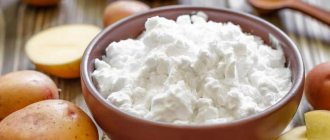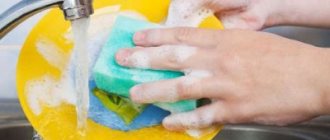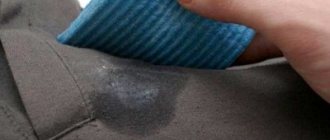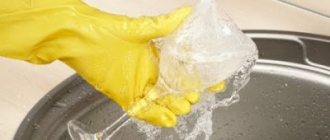Keeping the toilet clean is not difficult if you know exactly how to deal with the most common problem - urinary stones on the walls of the toilet.
This dirty yellow coating on a snow-white surface not only spoils the appearance of plumbing fixtures, but is also a breeding ground for many pathogenic bacteria that are dangerous to human health.
How to remove urinary stones in the toilet if there is water there, including old ones? There are a sufficient number of folk methods and types of household chemicals that can make the process of removing urinary stones quick and as effective as possible.
Reasons for appearance
Urine stone is nothing more than mineral particles from human urine that have settled and hardened on the walls of the toilet.
The forgetfulness of some toilet visitors to flush after themselves leads to the fact that the snow-white walls of the plumbing quickly become covered with a yellow, unpleasant-smelling coating.
Also, the accumulation of mineral deposits on the surface of the toilet bowl can be caused by:
low-quality tap water (a large amount of minerals from the water supply settle on the walls of the plumbing with each drain);- damage to the glossy surface (roughness, abrasions, chips retain urine particles, limescale);
- very rare, superficial cleaning of the toilet (plaque, settling on the walls of the toilet, hardens, transforming into a dense crust).
Draining with hot water can also cause urinary stone accumulation. High temperatures provoke the appearance of microcracks that accumulate mineral particles every time you go to the toilet.
Types of pollution
To determine what and how to clean the toilet, you need to immediately find out what kind of contamination is present:
- Limescale is a buildup of minerals that hardens tap water. They are deposited at the flushing point in the form of yellowish streaks. The rate of plaque formation depends on the frequency of washing.
- Urine stone is a deposit of substances found in the human body. When they get on the surface of sanitary ware, they combine with substances that are present in the water. Because of this, a dense coating is formed.
- Rust mostly forms on a rough surface that has been in contact with water for a long period of time.
Home remedies and household chemicals will help clean the toilet from all these contaminants.
Preparing for the removal process
To make the process of removing urinary stones faster, it is necessary to carry out a number of preparatory measures:
- Collect the necessary equipment . Cleaning the toilet is impossible without a brush, a hard sponge, a basin of clean water, and a ladle. It is important to remember that a huge number of germs and bacteria accumulate under the headband, so it is necessary to take care in advance to protect your hands, respiratory tract, and clothing.
- Choose a cleaning product . It is better to start the process of removing urinary stones with the most gentle and safe means at hand for human health. If it was not possible to remove the yellow plaque the first time, more aggressive chemical compounds will come to the rescue.
- Remove water from the toilet . Armed with rubber gloves and a ladle with a long handle (alternatively, you can use an old ladle, a jar, or a large syringe), scoop out all the liquid from the toilet. Ignoring this preparation point significantly reduces the quality of cleaning plumbing.
- Degrease contaminated surfaces . Before applying any cleaning composition, the walls of the toilet bowl are treated with liquid detergent, then rubbed with a brush and drained with clean water.
In order to prevent water from entering the cleaning agent during the cleaning process, it is necessary to turn off the tap located near the tank in advance.
Potent acids
If too much mineral deposits have accumulated on the walls of the toilet, most cleaning products will not cope with this problem. All that remains is to use acids that effectively corrode any contaminants. However, these products damage the coating of plumbing fixtures, so they should be used extremely rarely.
Table 2. Potent acids
| Title, illustration | Description |
| Orthophosphoric acid | This substance copes with mineral deposits in 8-12 minutes. Apply it liberally to the surface of the dirt and then rinse with water. The main advantage is that the acid does not destroy polymer surfaces, which means it can be used in the presence of plastic sewer pipes. In addition, acid effectively copes with rusty stains that often accumulate in the drain tank. You will need to pour 95 grams of acid into it, wait a few minutes, and then rinse off the water. |
| Concentrated hydrochloric acid (more than 30%) | This is one of the most dangerous acids, so it should be used carefully. First, you need to open the windows in the room and wear rubber gloves. Secondly, you should keep this product on the surface for no longer than 10 minutes, otherwise it will irreversibly damage the coating. In addition, it should only be used in the presence of metal sewer pipes. |
| Oxalic acid | This acid is sold in packages in the form of a light powder. The average exposure time of such a product is 50-60 minutes. The acid can be added either pure or with water. Once cleaning is complete, you will need to rinse the toilet thoroughly. |
| Electrolyte | This acid should be used carefully and for a short time - no more than 8-10 minutes. It is worth understanding that the main component of the product is caustic sulfuric acid, which, together with deposits and plaque, negatively affects the coating of plumbing fixtures. |
How to remove using folk remedies?
Everyone in their home has a lot of available tools that can be used to quickly clean the toilet from urinary stone deposits. TOP 5 most effective means at hand:
Citric acid does an excellent job of removing urinary stones, as well as lime deposits that have accumulated under the toilet rim.
The steps are simple: citric acid is mixed with a small amount of water (you should get a thick paste).The resulting product is applied to the stain with a sponge or an old toothbrush and left for at least three hours. Then, using a hard sponge or brush, the softened urinary stone is removed from the surface of the toilet bowl.
- Vinegar (9%) will not only dissolve urinary stones, but also help get rid of mold and mildew under the rim. The vinegar is first heated in a water bath, after which the walls of the toilet bowl are poured generously (to enhance the effect, contaminated areas can be sprinkled with soda powder). The treated surface is left to soak for at least six hours, after which the urinary stone can be easily scrubbed off with a stiff brush.
- Technical oxalic acid (sold in the hardware departments of large supermarkets) will quickly dissolve urinary stones. Oxalic acid is used in the following way: the crystals are poured onto the dirt in a fairly dense layer and left to react for five to six hours. Afterwards, the stone can be easily removed from the walls of the toilet with a stiff brush. You can work with oxalic acid only with rubber gloves in a well-ventilated area.
- Coca Cola . Phosphoric acid in Coca-Cola makes everyone's favorite carbonated drink an effective remedy in the fight against urinary stones. The steps are simple: at least three liters of Coca-Cola are poured into the toilet and left overnight. In the morning, dirt can be easily removed with a brush.
- Whiteness is a chlorine-containing liquid that dissolves urinary stones and disinfects the walls of the toilet bowl. It's very simple: pour white on the plumbing fixtures and leave for five to six hours. After the surface is thoroughly cleaned with a brush and rinsed with water.
It is necessary to remove urinary stones with the toilet doors open, protecting your hands with rubber gloves and your respiratory tract with a respirator.
The video will show you how to remove urinary stones in the toilet:
Removing thick plaque with strong acids
If no folk remedies or cleaning products help, you can use strong acids. These are extreme measures that should be used rarely and the exposure time strictly observed, since such chemicals can corrode the enamel and harm pipes and plastic parts.
Oxalic acid
Moderately toxic organic acid. A popular cleaning product for plumbing fixtures in the times of our grandmothers. Provides perfect whiteness and effectively removes stone. Nowadays it can be purchased at construction stores. Before use, carefully read the instructions and wear thick rubber gloves.
- Pour powdered acid onto a damp cloth.
- Apply to contaminated areas. If you need to clean the drain, dissolve it in water.
- Wait 1 hour, during which time the plaque will dissolve.
- Rinse thoroughly with water using a brush.
Orthophosphoric acid
It is an inorganic acid of medium strength. Using it, you can not only clean the toilet from stone, but also remove rust from the internal parts of the tank. The main advantage of this acid is that it does not damage rubber and plastic elements. Mode of application:
- Pour 100-150 ml of acid into the tank and into the drain hole
- Wait 15 minutes
- Rinse with plenty of water and clean with a brush.
Hydrochloric acid
This is a very strong toxic agent. Will remove stone instantly but should be used with extreme caution. Before use, wear safety glasses, a respirator and thick rubber gloves. The vapors of this acid are also dangerous!
- Apply liquid to the walls and pour half a glass into the drain hole.
- Exposure time – 10 minutes.
- Rinse with plenty of water
Attention! This method is not suitable if you have plastic pipes installed; they will leak due to acid damage.
Electrolyte
Battery electrolyte is produced on the basis of sulfuric acid; it can be found in any store for car enthusiasts. This strong and very dangerous product perfectly dissolves limescale and urinary stones. It can be used only in rare cases. The method of application is similar to the method with hydrochloric acid: apply, leave for 10-15 minutes and rinse with water. When using, follow all safety precautions, avoid splashing the product, as you can get chemical burns.
How to clean with special compounds?
On the shelves of hardware stores there is a wide range of household chemicals intended for cleaning plumbing fixtures.
For those who want to quickly restore the whiteness of the toilet walls as quickly as possible, you should pay attention to those products that contain formic or hydrochloric acid, sodium sulfate or carbonate. They are the ones who best cope with the yellow plaque of urinary stones.
TOP 3 most effective chemical compositions:
DOMESTOS gel PINK
A cleaning product whose special formula helps to quickly remove dense limescale , urinary stone, and all types of germs and bacteria. The average cost is 125 rubles. (volume 0.75 l). Read reviews here and here.
PROFIT SANI-GEL
Gel-like acid concentrate . In just ten minutes, it dissolves lime deposits, urinary and soapstone without leaving a trace, removes rust, and disinfects the walls of the toilet bowl.
The gel lays on the contaminated surface in a dense layer and does not drain from the walls, which allows you to use the cleaning agent sparingly. PROFIT SANI-GEL does not contain chlorine. The average cost is 120 rubles. (volume 0.75 l).
BATH EXTRA
An extra-strength cleanser with a thick, gel-like formula. Without any residue, it dissolves old, ingrained contaminants such as limestone, urinary stone, and rust. Eliminates unpleasant odors and disinfects toilet walls. Does not leave streaks after rinsing. The average cost is 180 rubles. (volume 1 l). You will find reviews here.
Toilet bowl cleaners are used strictly following all manufacturer’s recommendations, without exceeding the contact time of plumbing surfaces with aggressive chemical compounds.
This video will show you how to remove urinary stones from the toilet:
Removing old dirt
An electrolyte is effective in removing urinary stones that have accumulated over the years. You should work with it carefully, wear gloves and goggles, and apply it carefully without splashing. It will quickly dissolve the thick layer of stone inside the toilet, but can damage the sewer line made of plastic pipes.
If the toilet has not been cleaned for a long time, oxalic acid powder will help remove deposits. It is applied to a moistened sponge and removes dirt. You can sprinkle acid on the stains and leave for an hour. After completion of work, its residues should be thoroughly washed off.
Contamination inside the toilet appears systematically, so basic cleaning should be carried out constantly
To clean the toilet of dense deposits, first of all, they must be softened. The selected product is applied to the stains, left for several hours, after which it is cleaned with a fiber sponge, which is harsh on the surface. Some are difficult to achieve and the procedure has to be repeated. Housewives often use the following folk remedies to clean stone from plumbing fixtures:
- 1 cup 9% vinegar mixed with 1 tbsp. l. soda;
- citric acid powder or dissolved in water.
Caustic soda (caustic soda) has a strong alkaline effect. The granules can be dissolved in water and poured over dirty areas. This is an unsafe product, but if used wisely, it can clean the toilet.
A yellow coating may appear in a child's potty if the mother does not wash it, but only rinses it. Uric acid reacts with the pot material and is deposited. It doesn’t take much time to form; it’s enough to hold the child’s urine in a pot for 2-3 times for 20 minutes and not wash it thoroughly. The less smooth the surface, the faster the stone forms.
To wash it, dilute Domestos or Comet with water 1:1, pour it into a pot for 30 minutes and wash it. Some mothers consider the fragrance-free Narpik product to be more effective against stones than those containing chlorine. Silit Beng or the liquid product Sanitary-2 will help to wash away solid deposits, and there is no need to add water to them.
Prevention measures
Several rules will help you maintain perfect cleanliness of the plumbing in the toilet
- Regular cleaning. The toilet needs to be cleaned not when an impenetrable layer of urine and limestone has accumulated on its walls, but every day
- Using tablets for the tank. Special tablets that soften the water in the toilet tank prevent the growth of urinary deposits on the walls of the toilet.
- Checking the serviceability of the drain tank. It is important to prevent water from leaking from the tank. Otherwise, a yellow coating and rusty stains will very quickly appear on the walls of the toilet.
Just ten minutes a week spent on preventing the appearance of urinary stones will save several hours needed to completely remove stubborn stains.
Cleaning the toilet from water and urine stone, plaque and rust
Clean plumbing is an indicator that it is regularly maintained. The toilet is used frequently, so a variety of contaminants accumulate in it. If small deposits are not removed in a timely manner, they will harden and will not be so easy to get rid of. The main problems encountered when cleaning a toilet are limescale and urinary stone.
What not to do and why?
Do not remove urinary stones with a sharp knife or wire brush. The result of such actions will be deep scratches, into which dirt, germs and lime deposits very quickly accumulate.
Do not mix chemicals from different manufacturers . The result of such “experiments” is unpredictable.
Do not use dry abrasive powders for daily cleaning of the toilet. Large particles scratch the enamel of the toilet bowl, causing the snow-white surface to become covered with urinary stones many times faster.
Why does plaque form in the toilet?
The main “enemies” of cleanliness in the bathroom include urinary stone, limescale and rust. Let's take a closer look at the problem:
- The formation of urinary stones is a serious and intractable problem for those who do not know how to deal with it. Sediments form below, where water accumulates. Urine stone is a complex compound, the basis of which is mineral salts contained in human urine.
As a result, a persistent brown deposit forms on the bottom of the toilet, and when there is a lot of sediment, this can lead to a decrease in the diameter of the drain hole. For this reason, you need to get rid of urinary stones immediately after they appear.
- The appearance of limescale occurs due to calcium salts that tap water contains. The more of these compounds, the higher the water hardness and the more deposits there are.
Plaque forms on the internal surfaces of the toilet, as well as in the tank. Lime deposits are an ideal “base” for other types of pollution, and to prevent this from happening, it must be removed immediately.
- Rusty streaks on plumbing fixtures appear due to poor water quality and poor condition of water pipes. If the system is old and a large amount of rust has formed inside, its particles, along with water, fall onto the surface of the plumbing, forming orange-brown streaks. It should be remembered that the older the stains, the more difficult it is to remove them and to clean them in a timely manner.
How to clean a toilet from urinary stones, rust stains and lime deposits? Dealing with stains on the surface of plumbing fixtures is not difficult if you know how to do it and act in accordance with the rules.
Adviсe
A few life hacks from experienced housekeepers will help you keep your toilet plumbing clean. By adjusting the flow in the tank, you can reduce the accumulation of urinary stones in the toilet.
Chemical cleaning products have a strong, unpleasant odor . It is better to close the toilet lid while treating urinary stones. Otherwise, strong odors can cause headaches.
Thick, ingrained yellow deposits will remove battery electrolyte. Having protected your hands with gloves, your eyes with safety glasses, and your respiratory tract with a respirator, the walls of the toilet bowl are filled with electrolyte. In just five minutes, your plumbing will shine like new.
All the most important and useful information on cleaning the toilet is presented in this section.
Let's take stock
If you want to keep the toilet in its original form for many years, then you should not neglect hygiene procedures. Any old stains and deposits will be more difficult to remove, so you should spend at least half an hour a week cleaning your plumbing.
How to prevent the formation of urinary stones?
How to clean a toilet from limescale? Read more in the special article.










